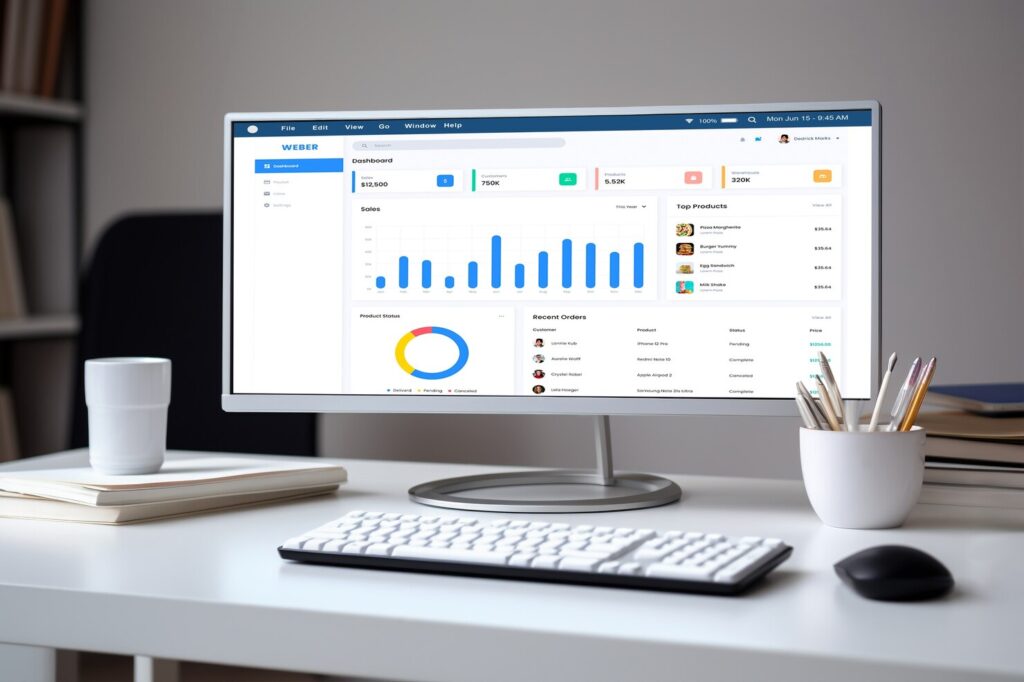SaaS Applications: Building Scalable Solutions for Modern Businesses
In today’s fast-evolving digital landscape, Software as a Service (SaaS) applications have transformed how businesses operate, offering scalable solutions that enhance efficiency and accessibility. SaaS applications allow users to access software over the internet without needing extensive infrastructure, making them a popular choice for organizations looking to optimize their operations.
What are SaaS Applications?
SaaS applications are cloud-based software solutions delivered to users via the internet. Unlike traditional software that requires installation and maintenance, SaaS applications are hosted on remote servers, allowing users to access them through a web browser. This model offers numerous benefits, including reduced costs, automatic updates, and scalability to meet changing business needs.
Key Benefits of SaaS Applications
Organizations that adopt SaaS applications can leverage a range of advantages:
- Cost Efficiency: SaaS eliminates the need for extensive hardware and software investments, reducing overall operational costs.
- Scalability: Businesses can easily scale their software usage according to demand, adding or removing users as needed without major disruptions.
- Automatic Updates: SaaS providers handle software updates and maintenance, ensuring users always have access to the latest features and security enhancements.
- Accessibility: Users can access SaaS applications from anywhere with an internet connection, promoting remote work and collaboration.
- Integration Capabilities: Many SaaS applications offer APIs that enable seamless integration with other software solutions, enhancing functionality and user experience.
Best Practices for Developing SaaS Applications
Developing a successful SaaS application requires careful planning and execution. Here are some best practices to consider:
- Define Your Target Audience: Understanding your target audience is crucial for designing features that meet their needs and preferences.
- Prioritize User Experience: Focus on creating an intuitive and user-friendly interface that enhances user engagement and satisfaction.
- Implement Robust Security Measures: Protect user data with encryption, secure authentication methods, and regular security audits.
- Choose the Right Technology Stack: Select technologies that support scalability, reliability, and performance. Popular choices include React, Node.js, AWS, and Azure.
- Monitor Performance: Use analytics tools to track application performance and user behavior, allowing for continuous improvement and optimization.
Essential Tools for SaaS Development
There are several tools available to streamline the SaaS development process:
- Frontend Frameworks: Libraries like React and Angular help create dynamic and responsive user interfaces.
- Backend Technologies: Use frameworks like Express.js with Node.js for building scalable server-side applications.
- Database Solutions: Consider using MongoDB or PostgreSQL for data management, ensuring reliability and performance.
- Cloud Services: Platforms like AWS and Google Cloud provide infrastructure and services to host your application and manage resources.
- DevOps Tools: Use tools like Docker for containerization and Kubernetes for orchestration to streamline deployment and scaling.
Challenges in SaaS Development
While SaaS applications offer numerous benefits, developers may encounter challenges, including:
- Data Security: Protecting sensitive user data from breaches and unauthorized access is a critical concern for SaaS providers.
- Performance Optimization: Ensuring the application performs well under varying loads requires constant monitoring and optimization.
- User Retention: Providing ongoing value and support to retain users in a competitive SaaS landscape is essential for long-term success.
- Compliance Regulations: Navigating compliance with regulations such as GDPR or HIPAA can pose challenges, requiring robust data management practices.
Case Study: Successful SaaS Implementation
Consider a startup that developed a project management tool as a SaaS application. By focusing on user experience and implementing a feedback loop, the company continuously improved its features based on customer input. Within the first year, they achieved a user base of over 10,000, highlighting the importance of customer-centric development in SaaS applications.
Conclusion
SaaS applications have revolutionized the way businesses operate, offering scalable, cost-effective, and efficient solutions for a wide range of needs. By understanding the fundamentals of SaaS development, embracing best practices, and leveraging the right tools, organizations can create applications that meet user demands and drive business success in the cloud. With a focus on continuous improvement and user engagement, SaaS applications will continue to play a pivotal role in the future of software development.




